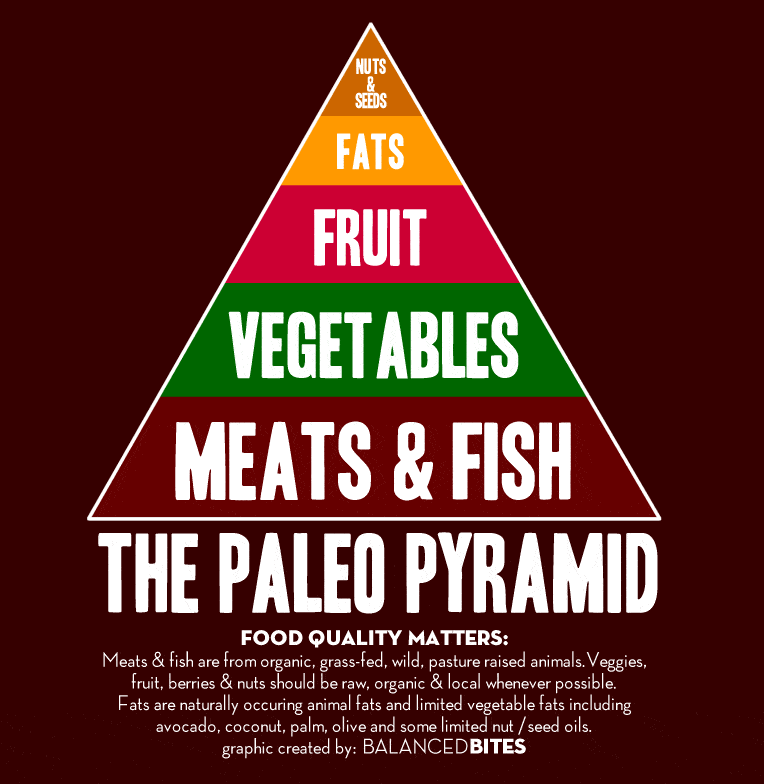Eating Paleo – Just Another Fad?
The paleo diet is one in which is believed to be consumed by our ancestors thousands of years ago, and is also referred to as the “caveman diet.” The belief is that we were born to only consume this diet where the modern diet causes diseases, obesity, and other health aliments. Paleo consists of foods that can be hunted, fished, or gathered (meat, fish, poultry, eggs, vegetables, roots, fruits, and berries). This means no grains, dairy, legumes, sugar, and salt.
Pros:
*Encourages fresh foods and avoiding processed foods
*Cutting out added sugar and sodium (both known to cause or fuel several diseases)
*Prevent type 2 diabetes, regulate blood pressure, and weight loss
*Emphasizes raw foods that lack processing and cooking therefore they are not stripped of important vitamins and minerals
*Sufficient amounts of water
*Overall “clean diet”
*Anti-inflammatory effect from the plant based nutrients (too much red meat leads to inflammation)
Cons:
*Typically exceeds dietary guidelines for fat and protein college essays for sale intake
*Typically does not meet the guidelines for carbohydrates
*Cutting out vital food groups like dairy, whole grains, and legumes excludes important vitamins and minerals like calcium and vitamin D
*Excludes fiber which helps aid in digestion and has been known to reduce risk of cancer, diabetes, and heart disease
*Weight loss from lack of variety of food choices
*Expensive
*Lack of energy due to cutting out carbohydrates, this is extremely important for athletes to consider
In today’s society it is almost impossible to truly eat as our ancestors once did. Many of us are not able to walk outside and shoot wild game and pick berries for lunch. We have revolutionized the Paleolithic diet to a grain-free, organic, grass-fed meat, wild caught fish, and non-processed foods diet. Our bodies have also revolutionized with gene adaptation to conform to the way we eat. For example, this is why some people can tolerate dairy products and some cannot. We have to keep in mind that the digestive systems of our Paleolithic ancestors were much different than ours. They were not made to digest grains, legumes, dairy, and refined sugars. That being said, just because we can digest these refined sugars and other products does not mean we should eat them. Diseases are not solely caused by the consumption of these foods, they are caused by the overconsumption of them.
Bottom Line: eat “80-20.” Eighty percent of the time, choose nutrient-rich foods like whole grains, fruits and vegetables, low-fat dairy products, lean proteins, and unsaturated fats. For the remaining 20 percent, enjoy the foods and drinks you love. When people deprive themselves of the foods they enjoy most, it often leads to an increased risk of overconsumption, yo-yo dieting, and ultimately an unhealthy relationship with food.
Macy Focken

Chrissy Barth
MS RDN RYT
The EPIC Biology sports nutrition blog is a resource for athletes of all ages. If you’re looking to gain a competitive advantage by optimizing your performance and improving overall wellness, you’ve come to the right place.
Unlock Your Body’s Potential EVERY DAY
Ready to ask yourself crucial questions about your health every day? We’ll help you knock it out of the park with a simple, easy-to-use checklist.
Ready to take your performance to the next level?
I’m here to help.
If you’re looking for individualized, sustainable sports nutrition guidance, let’s chat. Schedule a free 15-minute call so that we can get to know each other, then establish your next steps.
The paleo diet is one in which is believed to be consumed by our ancestors thousands of years ago, and is also referred to as the “caveman diet.” The belief is that we were born to only consume this diet where the modern diet causes diseases, obesity, and other health aliments. Paleo consists of foods that can be hunted, fished, or gathered (meat, fish, poultry, eggs, vegetables, roots, fruits, and berries). This means no grains, dairy, legumes, sugar, and salt.
Pros:
*Encourages fresh foods and avoiding processed foods
*Cutting out added sugar and sodium (both known to cause or fuel several diseases)
*Prevent type 2 diabetes, regulate blood pressure, and weight loss
*Emphasizes raw foods that lack processing and cooking therefore they are not stripped of important vitamins and minerals
*Sufficient amounts of water
*Overall “clean diet”
*Anti-inflammatory effect from the plant based nutrients (too much red meat leads to inflammation)
Cons:
*Typically exceeds dietary guidelines for fat and protein college essays for sale intake
*Typically does not meet the guidelines for carbohydrates
*Cutting out vital food groups like dairy, whole grains, and legumes excludes important vitamins and minerals like calcium and vitamin D
*Excludes fiber which helps aid in digestion and has been known to reduce risk of cancer, diabetes, and heart disease
*Weight loss from lack of variety of food choices
*Expensive
*Lack of energy due to cutting out carbohydrates, this is extremely important for athletes to consider
In today’s society it is almost impossible to truly eat as our ancestors once did. Many of us are not able to walk outside and shoot wild game and pick berries for lunch. We have revolutionized the Paleolithic diet to a grain-free, organic, grass-fed meat, wild caught fish, and non-processed foods diet. Our bodies have also revolutionized with gene adaptation to conform to the way we eat. For example, this is why some people can tolerate dairy products and some cannot. We have to keep in mind that the digestive systems of our Paleolithic ancestors were much different than ours. They were not made to digest grains, legumes, dairy, and refined sugars. That being said, just because we can digest these refined sugars and other products does not mean we should eat them. Diseases are not solely caused by the consumption of these foods, they are caused by the overconsumption of them.
Bottom Line: eat “80-20.” Eighty percent of the time, choose nutrient-rich foods like whole grains, fruits and vegetables, low-fat dairy products, lean proteins, and unsaturated fats. For the remaining 20 percent, enjoy the foods and drinks you love. When people deprive themselves of the foods they enjoy most, it often leads to an increased risk of overconsumption, yo-yo dieting, and ultimately an unhealthy relationship with food.
Macy Focken

